Infographic: Here’s how those Santa Ana winds get started and grow stronger
Santa Ana winds often spark concern about fire danger in California. Here's how the winds form and how they play a role during wildfire season:
A typical Santa Ana scenario
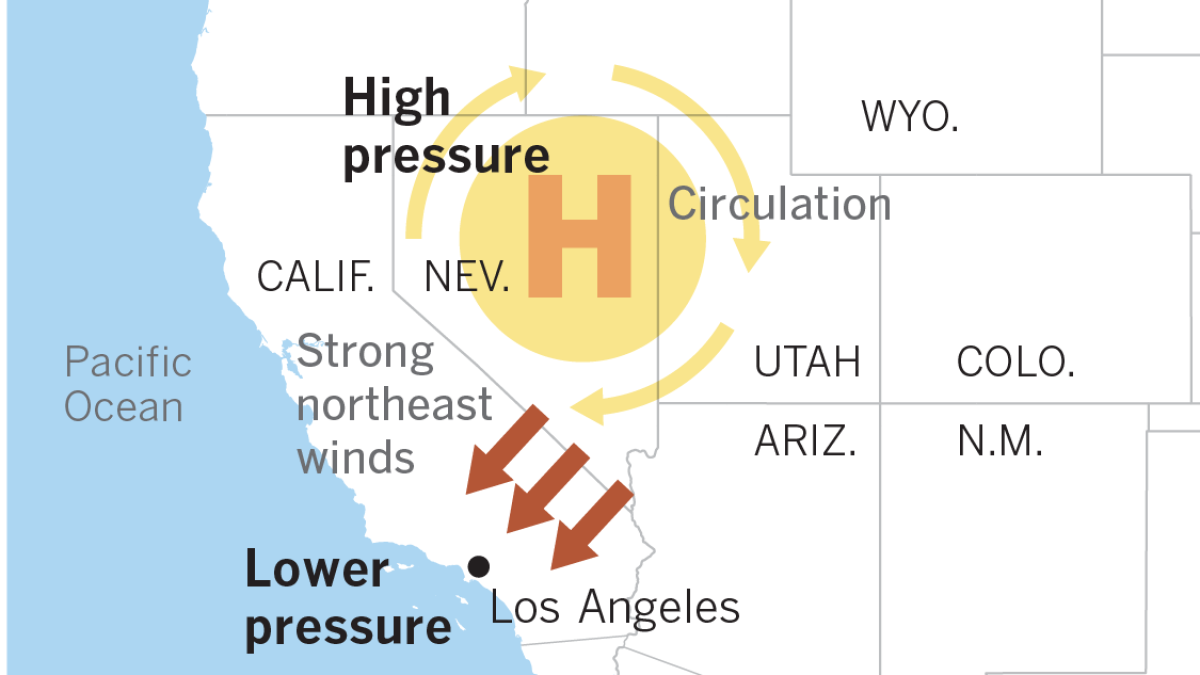
Most Santa Ana wind events are caused by high pressure in the Great Basin and lower pressure off the coast. High pressure flows to lower pressure, and the gradient, or difference, causes the intense winds.
Why mountain and canyon winds are stronger
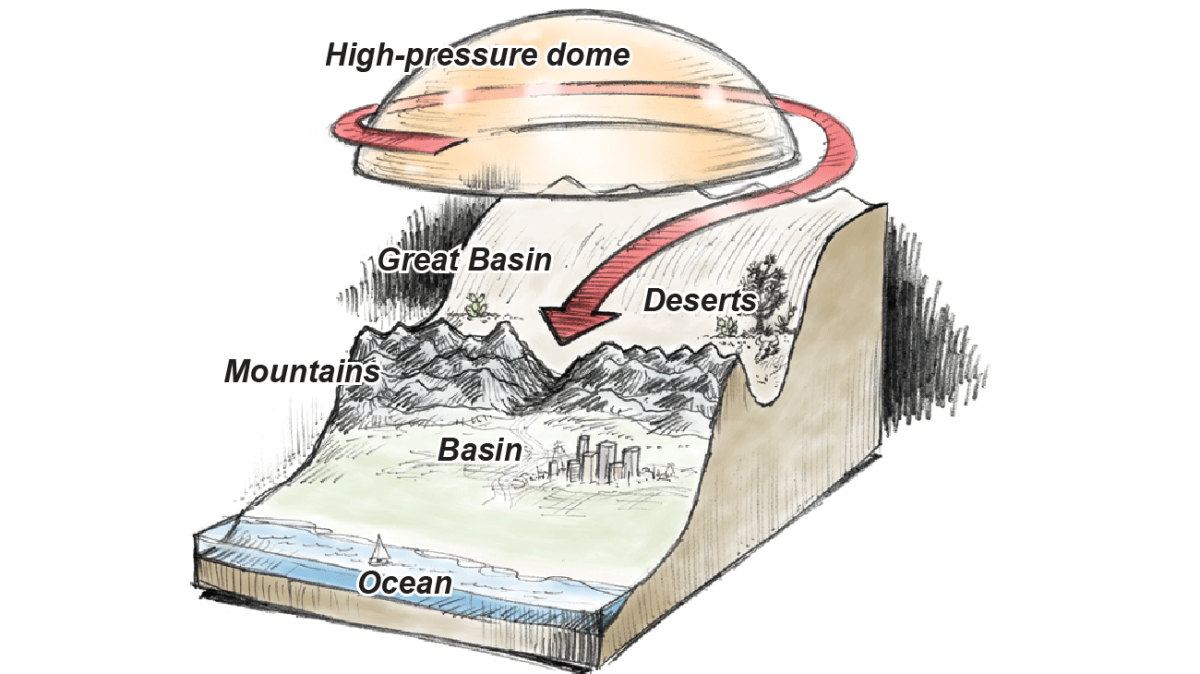
Air from high-pressure flows down toward sea level in Southern California. Sinking air heats up, loses moisture and speeds up, especially as it squeezes through canyons.
Accelerated winds
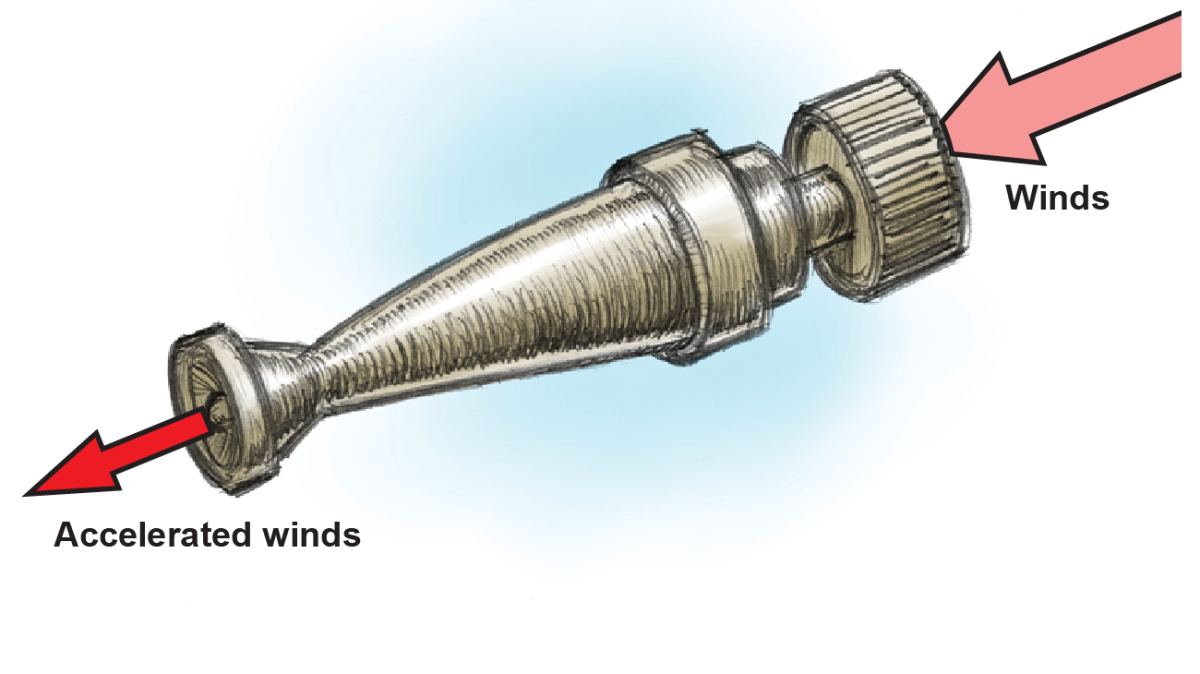
Mountain ranges block winds in some areas while winds howl elsewhere. Winds seek openings through the mountains, much like water would. Canyons and passes provide narrow openings that accelerate the winds like a nozzle on a garden hose does to water.
Terrain's role
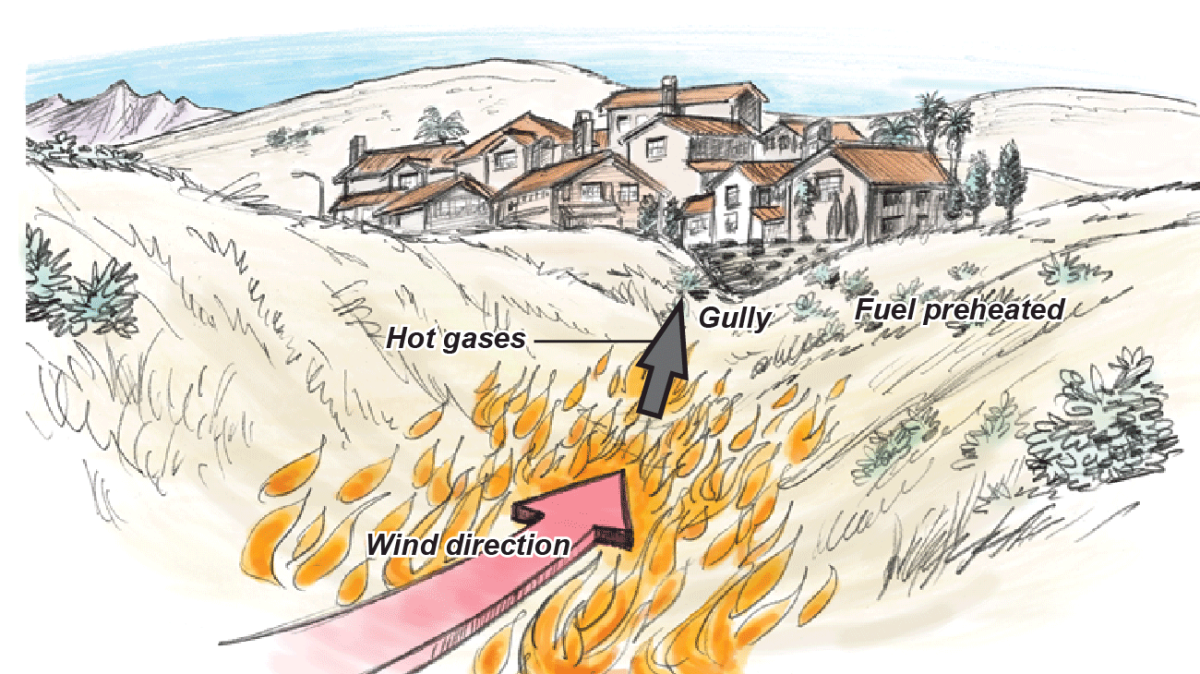
Terrain also plays a part in a fire's progress. On hillsides with gullies or ravines, a chimney effect can cause hot gases to rise up in these channels. The fire creates a draft, pulling oxygen into itself, and blazes roar up rapidly as if in a chimney.
Danger of embers
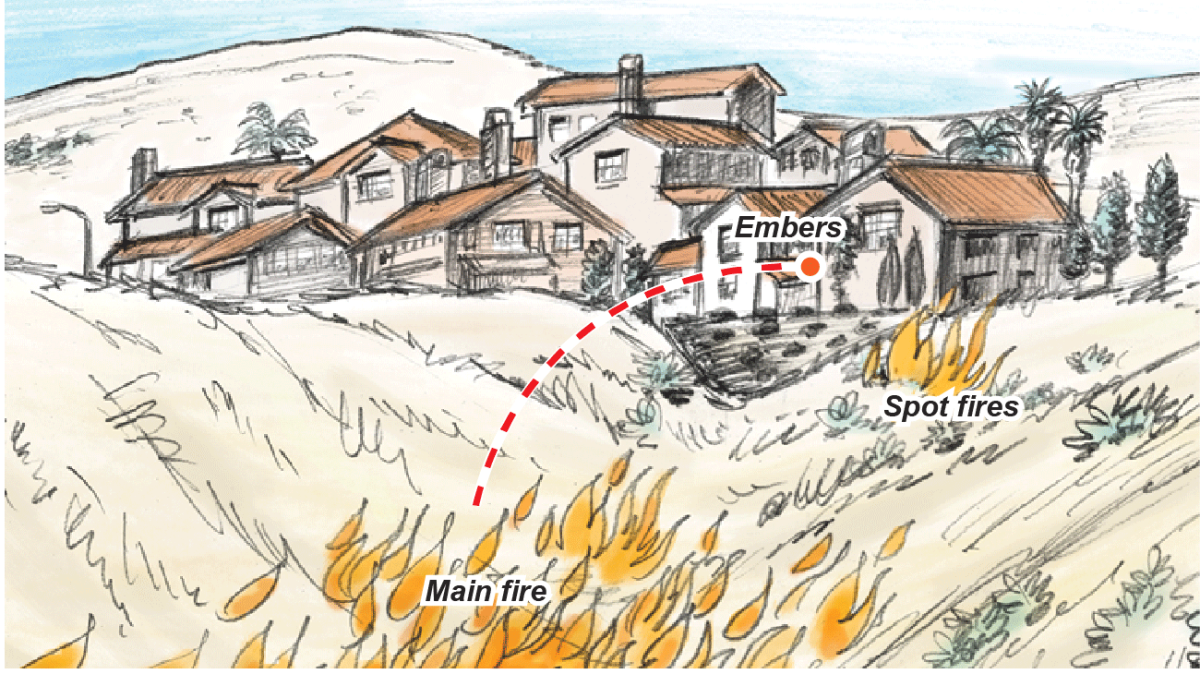
As fires rage and winds blow, hot embers may be carried far away from burning areas. They can touch off smaller fires well ahead of or behind a main fire, and these may turn into new wildfires.